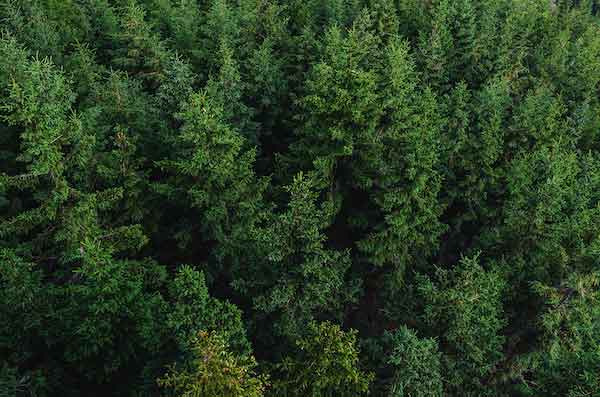Article
How to maintain biofilter media for continuous odour control
Biofiltration systems are not always operated at suitable conditions to achieve the desired odour control. Regular maintenance of natural bark biofiltration media is the key to effective wastewater odor control. Understand how to maintain and when to replace.
Proper maintenance of natural biofiltration media is essential for their effectiveness in odour control and can be done through routine inspections to assess the overall condition.
Below are the 3 key things you need to maintain to keep your biofiltration media working efficiently.
Weed control
Proper weed management helps maintain optimal conditions for microbial activity which keeps the bark “living”.
Biofiltration media is the ideal growing environment for weeds and when wind blown seed starts to grow it will take advantage of the nutrients available which will accelerate weed growth.
The presence of weeds may disrupt the airflow through the biofilter, impacting its overall performance causing blockages and spotting.
Regular inspections and manual removal of weeds are necessary to ensure that the biofilter's surface remains free from unwanted vegetation.
Dirt removal
Accumulation of dirt on the surface of biofiltration media can impede the passage of air through the system. Adequate airflow is required for the microbial communities to thrive and effectively degrade odourous compounds.
Periodic cleaning of the biofilter surface, either through manual removal or by using air pulsing systems, helps prevent clogging and ensures a consistent flow of air through the media and is key for maintaining the porosity of the media, allowing for better oxygen transfer to the microorganisms responsible for odour control.
Moisture management
Maintaining an optimal moisture level is also vital for the survival and activity of the microorganisms in the biofilter.
Sprinkler systems are often employed to regulate and control moisture levels within the biofiltration media. These systems help keep the media consistently moist, creating favorable conditions for microbial growth and activity.
It's important to strike a balance to avoid overwatering, which can lead to anaerobic conditions and negatively impact the biofiltration media. Monitoring moisture levels and adjusting sprinkler schedules accordingly is key to successful biofilter operation.
Have questions about biofilter maintenance? Talk to our team.
Regular sample testing
Regular sample testing is required for assessing the overall performance of the biofiltration system and identifying any potential issues.
A general guideline for routine testing is every 6 to 12 months, but the frequency may vary based on the specific requirements of the system, regulatory standards, and the nature of the wastewater being treated.
Regular testing helps in early detection of problems, ensuring timely maintenance and adjustments to keep the biofilter operating efficiently.
pH test
AFP test
*To ensure representative samples, collect a sufficient volume, typically at least 2-3 litres, from various points within the biofilter and sent away to a laboratory for accurate analysis.
Collect samples from a depth of 400mm or more into the media helps capture variations in microbial activity.
When does a biofilter need to be replaced?
The lifespan of natural bark biofiltration media can vary based on factors such as the type of bark used, the nature of the wastewater, and operational conditions.
As a general rule, consider replacing the media every 3 to 5 years. However, this timeline is indicative, and actual replacement needs should be determined through a combination of visual inspections and performance assessments.
Physical signs your biofilter media needs replacing
If you notice areas where your foot sinks down upon stepping, it could indicate a loss of structural integrity in the biofiltration media. Sinking or subsidence may suggest that the natural bark has undergone significant decomposition and compaction.
Level drop
While a natural settling of the media may occur over time, it is good practise to monitor the overall level of the biofiltration media. As the media settles, you can expect the level to naturally drop around 10-15%. To counteract this, Azwood recommends adding an extra 10-15% to your overall budget.
If, however, you observe a sudden and significant drop of 300mm (approximately 12 inches), it signals substantial breakdown and compaction, indicating that the biofiltration media has reached a point where replacement may be necessary.
Get in touch with our team. We will come out and assess the media to determine whether a top up would be adequate or if a full replacement is required.
Spotting
inspect the biofiltration media for visual signs of deterioration. Look for areas where the bark has broken down into smaller particles or appears excessively compacted.
Condensed spots in the biofilter media can restrict the flow of air through those specific areas. As a result, these regions may experience reduced oxygen availability.
Spotting or condensed regions may be indicative of media breakdown, creating uneven distribution and potentially reducing the overall efficiency of odour control as it puts extra pressure on the areas that are not condensed.
Related articles
Item 1 of 3

Follow us
More from Azwood
Connect with us on social media to learn more and be the first to hear our latest industry updates
